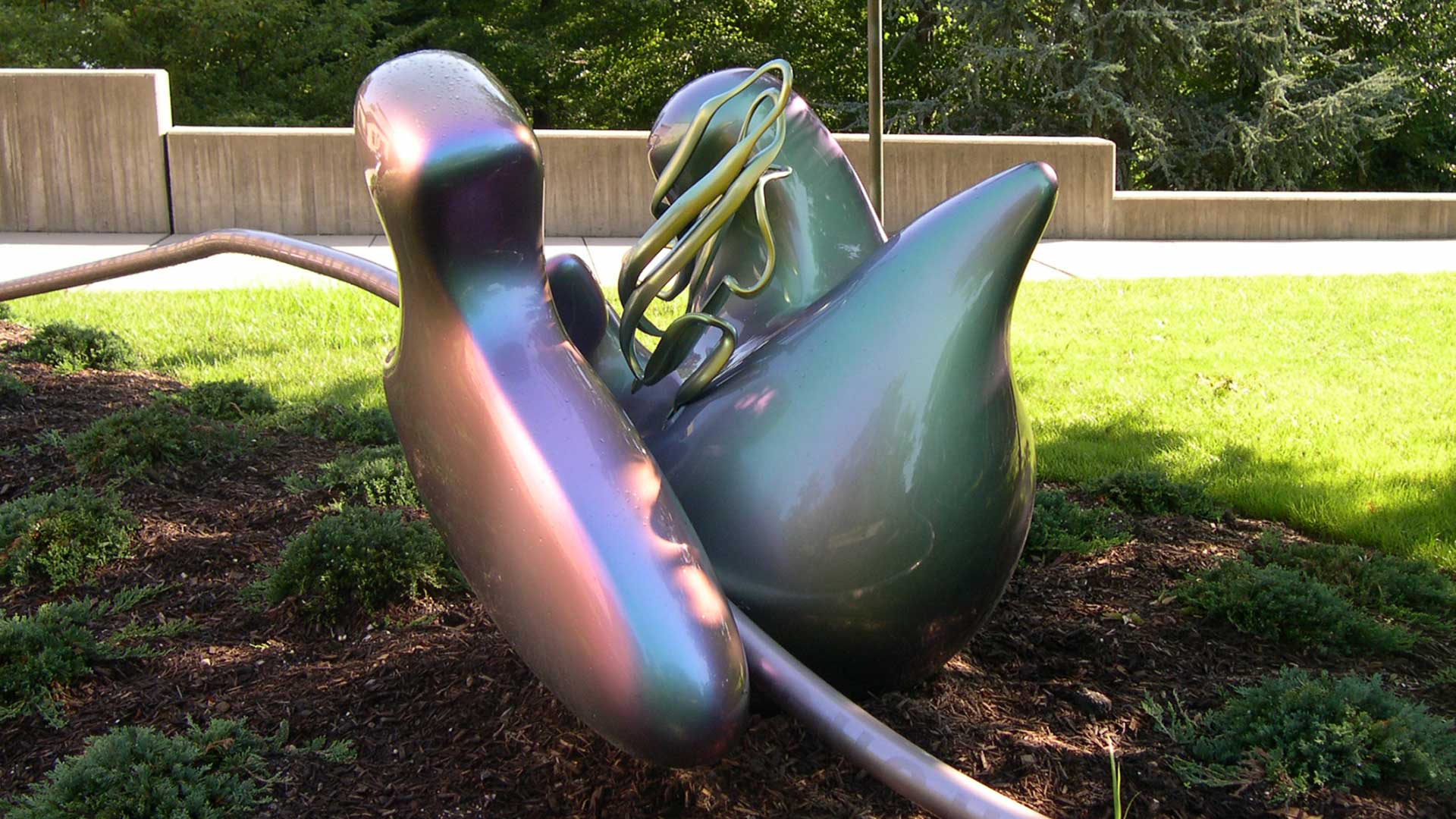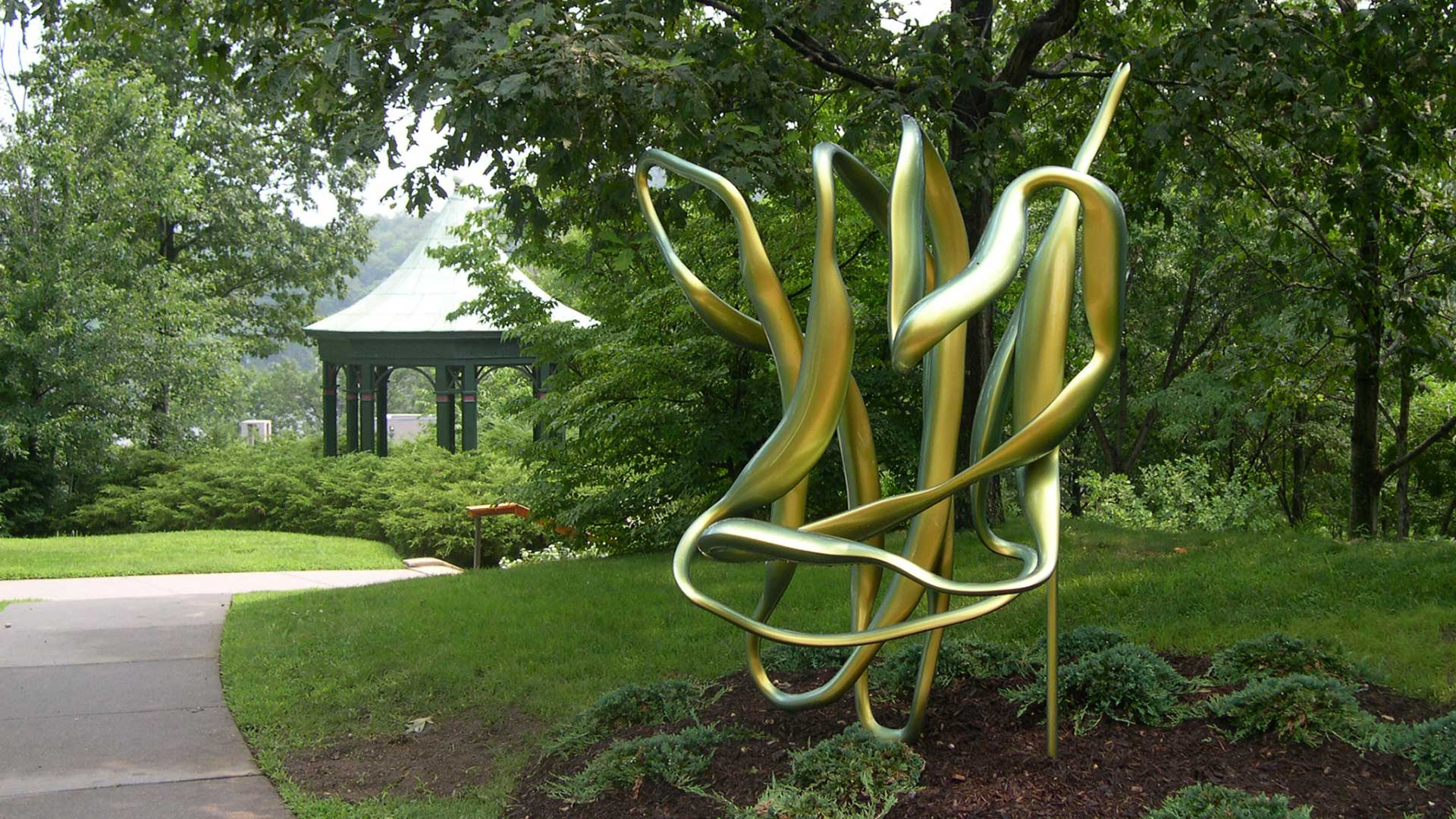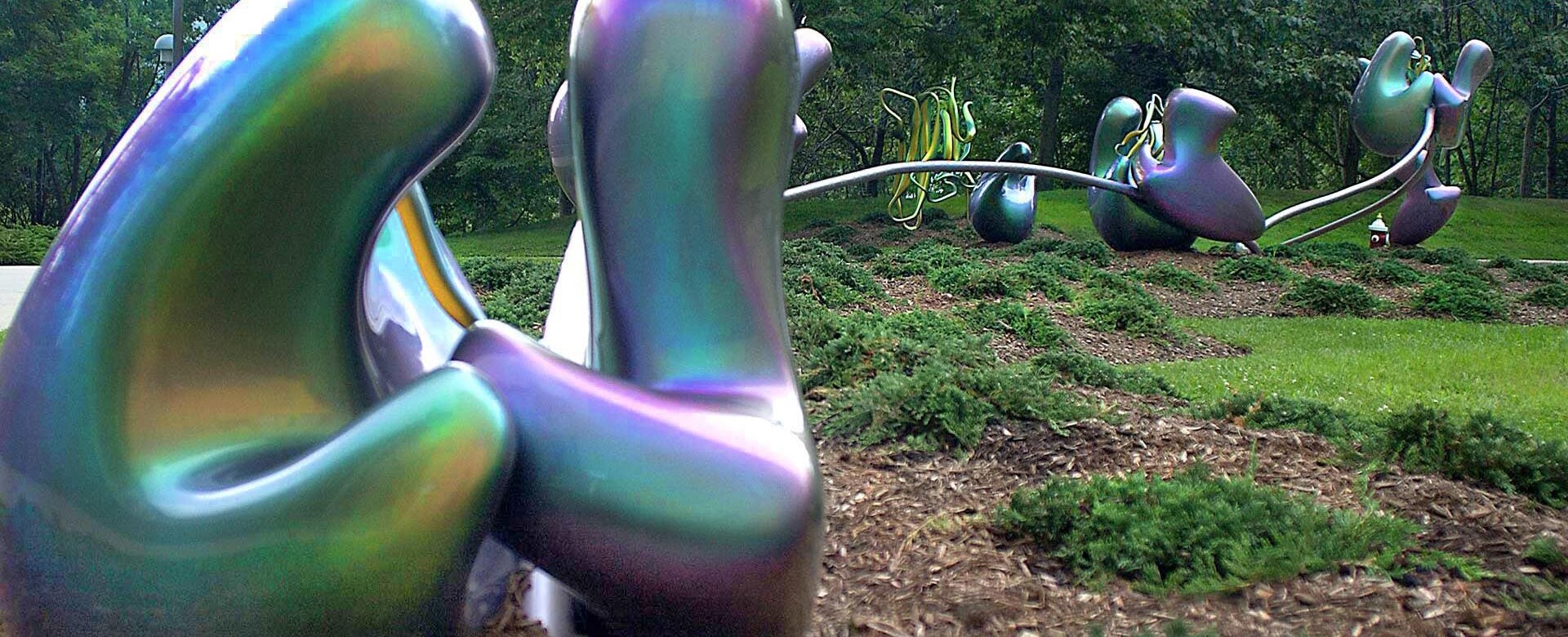In 2006, CSHL installed a cast metal sculpture built to celebrate a cornerstone of modern molecular biology. Since it arrived, the piece has become one of the most recognizable works of art in CSHL’s eclectic collection.
Dancing atop the hill behind CSHL’s Grace Auditorium is an 80-foot-long, pearlescent chain of biological factories called ribosomes caught in the act of protein production. Designed by American artist Mara G. Haseltine, Waltz of the Polypeptides guides viewers through the birth of a B-lymphocyte stimulator (BLyS) protein via an elegant molecular dance routine reminiscent of a real-life Viennese waltz.
Polypeptides “waltz” through each stage of BLyS protein production.
Polypeptides are the chains of molecules that make up all proteins. This one, BLyS, gives rise to the immune system’s B cells, which defend the body from outside infection. BLyS was discovered by researchers at Human Genome Sciences Inc. And it was these same researchers who commissioned the sculpture in 2003 and donated it to CSHL.
“I am delighted that Waltz of the Polypeptides has such a distinguished home,” Haseltine said at the sculpture’s 2006 unveiling. “CSHL is the birthplace of much of modern biology. Scientists there have laid the foundation for a lot of what we know about individual genes, the genetic code, and how the information stored in the genome is used to make the proteins of life.”

Haseltine is a pioneer in the field of SciArt, which combines scientific data with traditional artistic techniques. Her work aims to translate microscopic biology into large-scale, three-dimensional sculptures. It has been exhibited on four continents and is on permanent display in New York City, Philadelphia, Washington D.C., and Singapore.
Waltz of the Polypeptides features seven ribosomes at different stages of BLyS production. Each is mounted on a metal messenger RNA railing inscribed with BLyS’ genetic code. A short distance from the main installation stands a second, larger-scale sculpture of the completed protein.

Since its arrival, Waltz of the Polypeptides has been featured on magazine covers, holiday cards, and this very website. It has become symbolic of an idea long espoused at CSHL, that scientists surrounded by creative works of art will, in turn, be more creative in their science.
“Waltz of the Polypeptides … entices the interest of scientists, visitors, and students alike,” Haseltine wrote after the sculpture’s installation. “Their questions illuminate the fundamental aspects of biology and the central role of CSHL, initiating a revolution in our understanding of the basic processes of life.”
